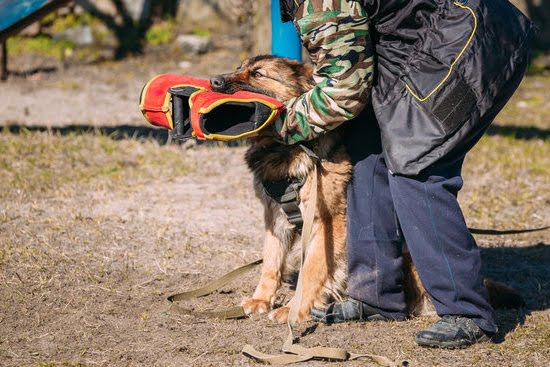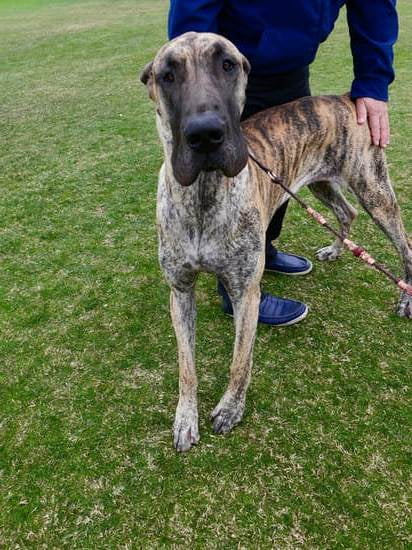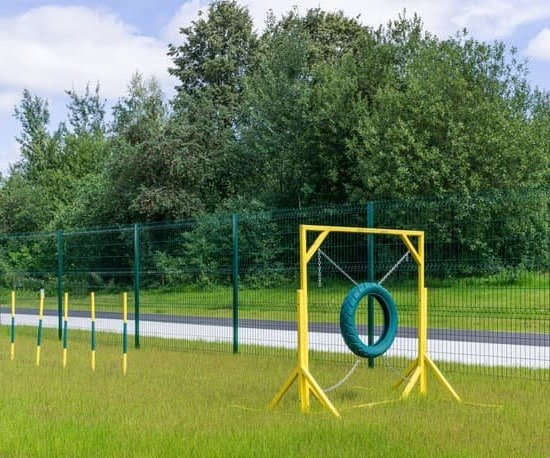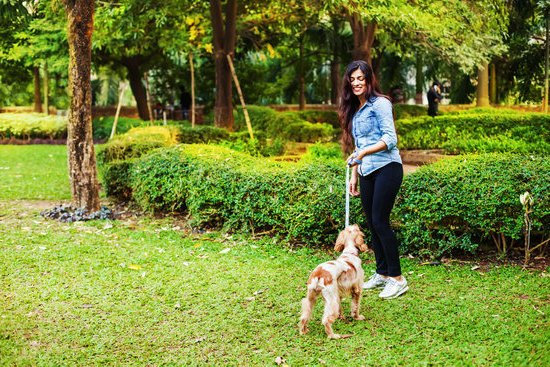Introduction
Having a well-trained Pitbull can come with a lot of benefits. A well-trained dog can learn how to behave in any given situation and make you, their owner, feel safe and secure. They are smart and energetic dogs that need lots of stimulation and love, but when it comes to obedience training, it is possible to create a lasting bond between you and your pup. Training your pitbull doesn’t have to be hard work; with the right tools and knowledge, you will be able to teach your dog basic commands, control problem behaviors such as excessive barking or jumping up on people, walk calmly on a leash, recognize basic cues from you (e.g., sit), and stay in one place for an extended period of time. Not only will this improve the comfort level of everyone around them; it will also create an overall atmosphere of safety for both you and them. With training, pitbulls can become wonderful family pets that know their boundaries but still get the chance to explore their environment safely and happily.
Selecting the Right Training Tools and Supplies
When training a Pitbull Dog, the right tools and supplies are essential for success. Before beginning, it is important to assess each tool and supply available and understand which ones are suitable for use with Pitbulls. Begin by selecting a collar that will comfortably fit your dog’s neck–suitable collars include flat buckle collars, slip leads, choke chains, or soft-style martingales. A six-foot leash will also be needed to allow your pup plenty of room to move when walking or running with you; some owners may opt for a ten-foot leash if their dog needs more space during exercise. Additionally, treats should be chosen based on the size of your dog; small treats will be most effective since they can be eaten quickly without temptation to spit them out. Training clickers can also help immensely when teaching commands as they provide an audible cue in synchronization with praise or rewards. Finally, toys such as tug ropes are great for gut painters as well as providing positive reinforcement after completing tasks correctly; providing new toys every few weeks can keep things interesting and motivating during training. With the right set up, you’re well on your way to successfully training a lovable and obedient Pitbull Dog!
Establishing Clear Rules and Expectations
Establishing clear rules and expectations is key when it comes to training your Pitbull dog. Before starting any training exercises or activities, you should determine what behavior is acceptable and which is not. Clearly communicate these expectations to your dog in a firm yet loving manner. Give them a consistent routine so they know what is expected of them at all times. Set specific boundaries for when, where, and how long playtime and other activities should take place. Make sure that these limits are adhered to routinely – this will help reinforce the message that certain behaviors are expected from your pup. Additionally, communicate to your pup using positive reinforcement techniques whenever possible – reward good behaviors with treats, praise, petting, etc., and use gentle corrections for undesired behavior so as not to confuse or scare your pup into submission.
Teaching Your Pitbull to Follow Basic Commands
Using a consistent, fair and positive method of training is the best way to train your Pitbull dog. Start by teaching the basics like sit, stay, come and down. Use rewards such as treats or praise when they obey commands. You should practice these commands at least twice a day and try to challenge your pup with harder commands once they have mastered the basics. Make sure they understand what each command means by repeating it over time when practicing.
When you feel your Pitbull dog is proficient in following basic commands, then it’s time to work on things like walking properly on a leash. Start off with short walks around the block before increasing both the distance and their ability to focus on you. When out for a walk practice commands like ‘heel’ and ‘sit’ regularly so that they learn to respond reliably each time. Use lots of encouragement during these more advanced lessons as positive reinforcement goes a long way in teaching dogs obedience!
Reinforcing Good Behavior Through Positive Rewards
Training your pitbull dog is a great way to ensure that you and your pet can live together harmoniously. Pitbulls are notoriously hard to train because of their reputation as strong-willed and aggressive, but with proper training, they can make loving and loyal companions. When it comes to training, understanding the basics of positive reinforcement is key. Positive rewards provide pleasant consequences for desired behaviors which helps teach dogs to exhibit these behaviors more regularly. When training your pitbull, it is important to deliver rewards immediately following desirable behavior so the connection between the act and reward will be clear. Many people choose treats as rewards; however they should be given in small amounts so as not to promote unhealthy weight gain in the dog. Additionally, verbal praise or allowing access to certain areas of the house can also serve as desirable rewards. Eventually, the dog will learn that exhibiting certain behaviors means receiving a reward, leading to a well-behaved canine companion.
Dealing With Difficult or Unwanted Behaviors
One of the key components to successfully training a Pitbull is managing difficult or unwanted behaviors. If a Pitbull does something you do not like, it’s important that you know how to handle the situation in an effective and humane way. The first step is to identify what behavior needs to be corrected, and then provide positive reinforcement if the desired outcome is achieved. For example, instead of punishing your Pitbull if they bark near strangers while on a walk, reward them with treats when they stay quiet and follow commands. Sometimes removing the opportunity for unwanted behaviors can be helpful so avoid putting your Pitbull into situations where they may struggle or resort to strange antics. Additionally, establishing consistent rules and expectations will help your pup understand their boundaries. Lastly, make sure to never use harsh punishments such as hitting or yelling at your pet – these methods are ineffective and can lead to further aggressive behaviors in some dogs.
Creating an Effective Training Program
To create an effective training program for your Pitbull, it is important to establish a positive relationship with your pup. Spend time playing and engaging in activities such as fetch or tug of war. This helps build a strong bond between you and your dog, which will make training more successful in the long run. Additionally, operant conditioning through reward-based systems can be used to help teach your pup good manners and reinforce behaviors such as coming when called or waiting patiently. Reinforcing good choices through treats and praise will ensure that the behavior is practiced over time, turning it into a habit. Furthermore, it is equally important to actively discourage undesirable behaviors such as barking or jumping on people. Reprimanding these actions with a stern “no” should be done in the moment whenever possible so that the message sticks and undesired behaviors are not rewarded with attention. Finally, setting up frequent short sessions throughout the day to practice new commands can help your pup stay focused and involved in his training routine.
Time Management and Choosing the Right Trainer
When it comes to training your pitbull, it is important to be aware of how much time and commitment you need to dedicate in order to successfully train your pup. Initially, you should establish a regular schedule for their training sessions. Be sure to choose a trainer who has the necessary experience, resources and knowledge for training pitbulls. Additionally, it is crucial that you put in the effort to ensure your pitbull properly follows the instructions of the trainer so they can learn at an acceptable rate.
It is also important that as the owner, you are actively involved throughout the process by supporting and encouraging your pup during each session so that they stay engaged in learning. Consistency is key when it comes to teaching them new skills and behaviors, so make sure that training sessions are regular or else any progress made previously will be nullified. You should also incorporate positive reinforcement when rewarding good behavior during each session to reward your pup and help build their confidence. Finally, remember to practice patience with yourself and your dog during this process as they slowly but surely learn better habits over time!
Conclusion
Investing time into training your Pitbull dog is a great way to gain an incredibly loyal and loving companion. Regularly engaging in positive reinforcement training can create strong bonds with your pet while keeping them physically and mentally healthy. The simple act of praising your canine when they’ve done something correctly can reassure them that they are appreciated and loved, ultimately resulting in a happy and well-behaved pup. On the flip side, ignoring undesired behaviors is just as effective as disciplining them, ensuring that their bad habits will decrease over time. Training your beloved dog also provides exercise for both you and your four-legged friends, reinforcing a mutual trust between the two of you. By taking the time to invest in training your Pitbull dog, you can form lifelong memories together as both pup and pet parent benefit from a loving relationship built on understanding!

Welcome to the blog! I am a professional dog trainer and have been working with dogs for many years. In this blog, I will be discussing various topics related to dog training, including tips, tricks, and advice. I hope you find this information helpful and informative. Thanks for reading!





